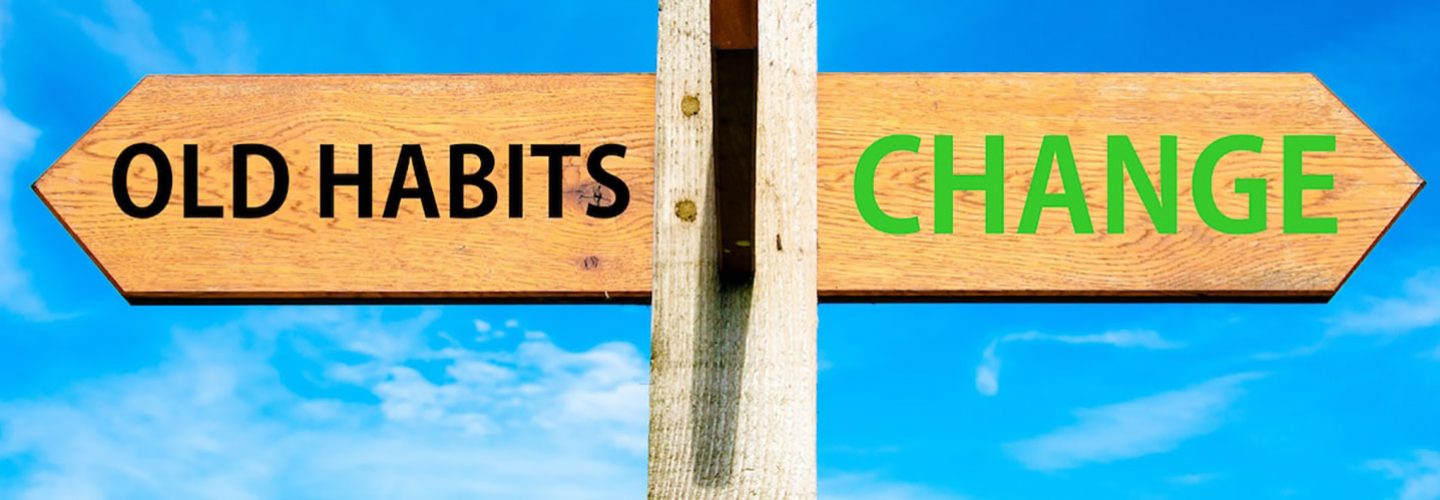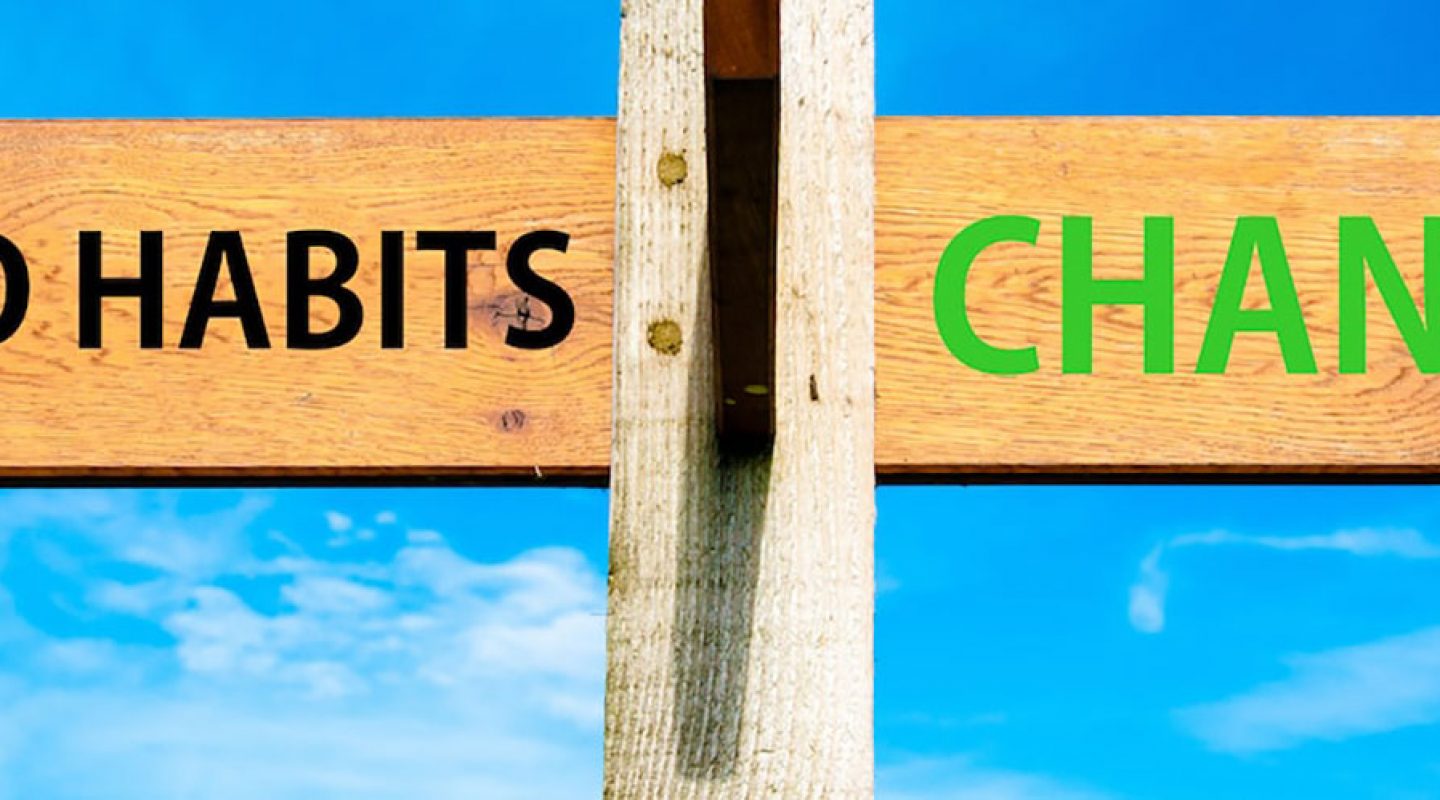Homepage > Non classifié(e) > Positive psychology and behaviour change: 5 ways to change your habits
Positive psychology and behaviour change: 5 ways to change your habits


Most of us are too familiar with the fact that unhealthy habits are notoriously hard to change. Habits are akin to taking the beaten path: they require little effort, and with the passage of time they grow stronger and stronger. This is despite our knowledge of the beneficial effects of constructive habits, such as healthy eating and exercise, on our well-being, self-esteem and overall quality of life.
We may be impressed with studies demonstrating that exercise is more effective than medication as a depression cure (e.g. Babyak et al, 2000), yet again, knowledge alone offers insufficient motivation for making a change happen.
Fixed or Flexible Mindset
Some of the barriers to making a successful change can be found in our beliefs, low levels of self-regulation and the complexity of the change process itself. For example, whether we have a fixed or flexible mindset can determine how much effort we would invest in making a change happen and how quickly we would give up when experiencing a set back.
Individuals with a fixed mindset believe that their capacities are innate, whilst those with a flexible one trust that their present achievements are the result of effort rather than genes (Dweck, 2002). Furthermore, given that recent research equates our self-regulation, or willpower, with a muscle, it is no wonder that a hard day at work can deplete it, resulting in us giving up on our best intentions (Baumeister et al., 2006).
What is more, we need to be aware that any change process has to go through a number of changes if we are to hope for a successful outcome (Prochaska, Norcross and DiClemente, 1995).
Positive Psychology and Behaviour Change
Positive psychology, the science of happiness and well-being, advocates approaching change not from the perspective of difficulty, but rather from the perspective of capitalising on what we have, using our strengths and activating positive experiences. In that it uses well-researched interventions associated with flourishing and well-being.
Below, I will discuss some strategies for facilitating change and a new habit formation from a positive psychology perspective. It may sound like common sense, yet unless we enjoy our new habit, we are unlikely to stick to it.
Positive Reminiscing
If the habit you are trying to instil is exercise, try a strategy called positive reminiscing. Bring to mind all successful experiences of exercising from the past. Just let the images come to your memory, try seeing them as vividly as you can.

Savouring
Another strategy conducive to enjoyment is savouring, or being fully immersed in, attending to and appreciating the current experience. How often we mindlessly swallow our breakfast, our even run on an exercise machine whilst thinking of something else. Savouring requires us to fully engage with what we are doing, focusing on what we find most enjoyable.
- Way of savouring: Way to do it
- Sharing with others: You can seek out others to share the experience or tell others how much you value the moment.
- Memory-building: Take mental photographs of the event and reminisce about it later.
- Self-congratulations: Do not be afraid of pride. Tell yourself how impressed others are and remember how long you’ve waited for this to happen.
- Sharpening perceptions: Focus on certain elements of an immediate experience and block out others.
- Absorption: Let yourself get totally immersed and try not to think, just sense.
Increasing Hope
Hope, or a belief in a possible beneficial outcome, can be activated by visualising one’s best possible self over a period of time. Consider a desired future image of yourself – imagine that everything has gone the way you hoped for, that you have achieved what you aimed for, that you succeeded in making the change happen, that your best potentials have come to be realised.
Write about and vividly imagine yourself in that future and continue engaging with this technique for the course of four weeks (Lyubomirsky, 2008). This is likely to increase hope, which is a primary source of positive affect and psycho-physiological arousal and is a strong emotional driver of intentional change.
Using Your Strengths
Using our strengths is something that generally comes effortlessly to us, when we do what we are good at, we feel authentic and energised. Let’s consider how our strengths can be harnessed in the service of our intended changes.
- First, visit www.authentichappiness.org and take the 40-minutes-long VIA survey. At the end, it will help you identify your top strengths. Print out or write down the feedback you receive about your signature strengths. Try to use these strengths more often during the following week and notice how this makes you feel.
- The following week go one step further and every day for the next seven days, use one of your top five strengths in a way that you have not before (Seligman et al, 2005). For example, you can apply these strengths to the change challenge at hand. If creativity is one of your top strengths, try cooking a novel meal from only the healthiest ingredients. Social intelligence may be used to invite a friend to join you in jogging. If you are struggling with ideas, try the strengths cards (at www.positran.co.uk). Not only it is easier to identify your strengths looking at the relevant images, but you can see many suggestions for strengths stretch on the back of your cards.
- Finally, support mechanisms, such as positive relationships often underlie a successful change. Our friends and families can both be an impediment or a driver for our intentions. Strategies such as active-constructive responding can assist in developing more positive relationships.

Responding to Good News in an Active-Constructive Way
Researchers discovered that what distinguishes good relationships from poor ones is not how the partners react to problems, but how they welcome good news in each other’s lives (Gable et al, 2004). There are quite a number of ways in which we can react to our partner succeeding in stopping smoking, for example.
Very often, we adopt a passive-constructive strategy – we acknowledge their success and move on: ‘Well done, dear’. At times good news can even trigger negative emotional reactions in us, such as jealousy, envy, anger or anxiety and we may react in an unconstructive manner.
An example of an active-destructive response could be: ‘And what am I supposed to do now that you stopped? Go out of the house?’ A passive-destructive strategy would be to undermine someone’s success by simply ignoring it, pretending it didn’t happen: ‘Is dinner ready?’
Research shows that relationships that favour all of the above strategies are less close, supportive and trusting. So how can we respond to good news in an active-constructive way?
- First of all, we can aim to understand what happened – through paying close attention to the person, listening, asking questions, being interested and enthusiastic.
- The second stage is celebration and capitalising on the success – open a bottle of Champagne, call your close relatives and friends to tell them the news, do something together that you always wanted to, but never got around to!
Written by Pr. Ilona Boniwell, originally published on lifelabs.psychologies.co.uk
Useful Resources
Strengths cards – buy here
Boniwell, I. (2006) Positive Psychology in a Nutshell. London: The Open University Press.
Shahar, T.B. (2007). Happier. New York: McGrawHil





